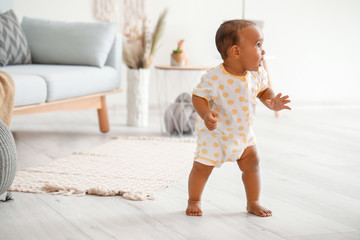3 Simple Home Exercises to Help Your Baby Walk
By Jeanette Cartafalsa, DPT
Kids Place West Pediatric Physical Therapist
Are you concerned that your baby is not walking? According to the CDC, most babies should be taking a few steps on their own by 15 months old. The most common reasons we see for your child not walking but have good standing balance are difficulty with weight shifting and postural control in all planes of motion.
When a child is developing new skills, we first learn to move in the sagittal plane. This is the plane we move in when we go from sitting to standing or squatting. Babies do this very early when they are pushing up on their arms in tummy time. So, your child may be able to stand, squat, and recover.
If your baby still won’t take a step, it could be because they are missing the skills to move in the next two planes of motion, frontal plane and transverse plane. When we move side to side, we are moving in the frontal plane. This is why new walkers look like they are waddling. They walk with their feet wide apart and therefore need to shift very far from side to side in order to move. The transverse plane is for rotation. As we mature in our walking pattern, movement in the frontal plane becomes more controlled. We narrow our feet and move with more rotation in our trunk and pelvis to be able to take longer steps forward.
How do you encourage your baby to build strength and confidence to take that first step? Here are 3 home exercises to help your baby walk:
- Prop standing and weight shifting
Encourage your child to stand with one foot raised on a small surface, as little as 2-3 inches high. Have them reach for toys towards the side of the foot on the ground. Encourage them to shift their weight so that most of their weight is on the foot that is on the ground before returning back to the middle.
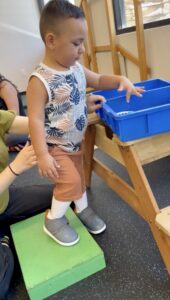
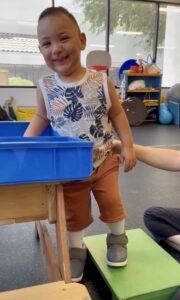
2. Rotating away from a support surface
Have your child stand at a safe support surface, like your couch. Encourage them to keep their feet facing towards the couch but rotate their arms and trunk behind them to reach for a toy or desired object to work on movement in the transverse plane.
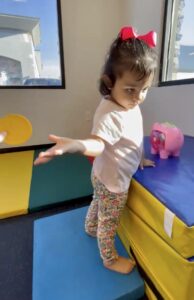
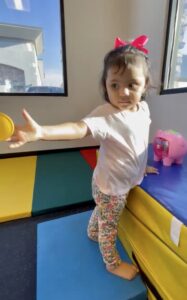
3. Standing with feet staggered
Place one foot slightly in front of the other, as if in mid-step. Encourage your child to reach forward and towards the side of the foot that is in front. Be sure to switch feet so they can practice going both ways.
 .
. 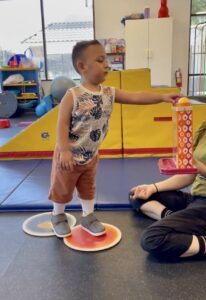
If you feel your child may benefit from skilled pediatric physical therapy, it never hurts to come in for an evaluation to see how else we can get your little one moving!

